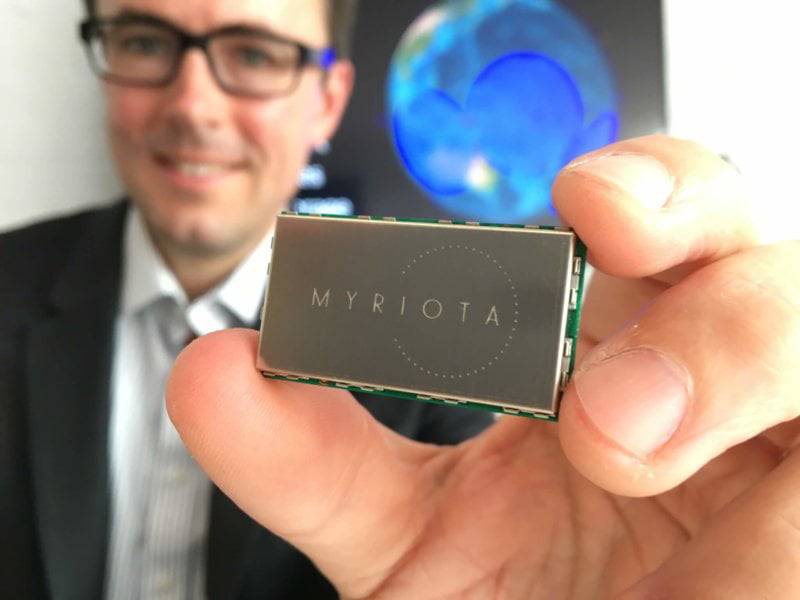South Australian satellite communications company Myriota will push $2.72 million into an Internet of Things lab in Adelaide as it attempts to scale-up quickly for what it sees as a global market.
Use cases for Myriota’s cheap, palm-sized, low-power satellite transmitters range from battlefield communications to water tank monitoring for farmers.
The funding gives Myriota the legs to hire more brainpower and commercialise its satellite transmission platform sometime this year. Also this year, the way the company is likely to seek a larger chunk of series funding.

The current capital injection is made up of $1.36 million in shareholders funds and $1.36 million from the South Australian State Government’s Future Jobs Fund. The company is likely to seek a larger chunk of series funding later this year.
“This new IoT lab will enable us to build on our core technology and apply it across a wide range of industries including agriculture, defence, utilities, environmental monitoring, asset tracking and logistics,” said Myriota chief executive officer Alex Grant.
Myriota was founded in 2015 and aims to commercialise technology spun out of the University of South Australia.
The platform uses small satellite transmitters that communicate in 24-byte chunks with a constellation of low-earth-orbit nano satellites which then relay the messages to earth where they are decoded and sent to the end user.
The company has access to three satellites through Canada-based exactEarth, and plans to launch its own satellites further down the track.
“Our system works from any location on earth, and we look forward to taking our product global,” said Dr Grant.
The company employs 11 people at the moment and will boost its numbers to more than 60 over the next several years, according to Tom Rayner, Myriota’s business development executive.
Mr Rayner expects the Myriota will put on 20 or more people this year, including software and hardware developers as well as data networking and satellite communications professionals.
Where Myriota believes it has an edge over rivals is that its platform can scale to very large numbers of IoT devices across very remote areas.
“It’s the huge numbers of terminals that can communicate to a satellite at once that is our intellectual property, rather than the satellite itself.” says Mr Rayner.
The coming of nano satellites is commoditising the orbital side of satellite communications.
“The hard bit is talking to them at low cost in huge numbers,” says Mr Rayner.
Myriota has a water tank monitoring pilot program where farmers can know the water level in tanks spread across large properties from a terminal in the homestead without having to drive out hundreds of kilometres to manually measure their tanks.
The trial involves twenty farms across Australia but potentially could be scaled up to thousands of farms as a subscription service.
The water tank monitoring system could be adapted for other agricultural uses such as connecting soil moisture probes, weather stations or rain gauges.
“Another potential application is a satellite connected ear tag for a cow. When one of our satellites is over Australia it can see the whole country and there are tens of millions of cows,” Mr Rayner said.
“There is a clear engineering pathway to having a satellite connected ear tag and we are talking to people doing clever stuff on the ear tag side.”
The company sees logistics and asset tracking as a big opportunity as well as remote area utility monitoring.
Mr Rayner said Myriota was working towards producing transmitters that cost less than $100 each with subscription services that could cost around $5 a month.
“Most IoT applications we are seeing we are aiming to service them for a monthly subscription cost of $5 a month or less – this could be much less in large deployments.”
The company is also working with wearable technology firm IMeasureU to develop a personal “Fight Recorder” to be worn by Australian Army soldiers on the battlefield.
The recorders will be able to tell a satellite the exact location of a wounded soldier and record soldier’s movement information during an engagement which can then be analysed to help improve tactics and weapons.
The recorders could also be adapted for use by emergency services personnel.
Myriota won best industrial startup at the 2017 Internet of Things World Congress in San Francisco.
Do you know more? Contact James Riley via Email.

